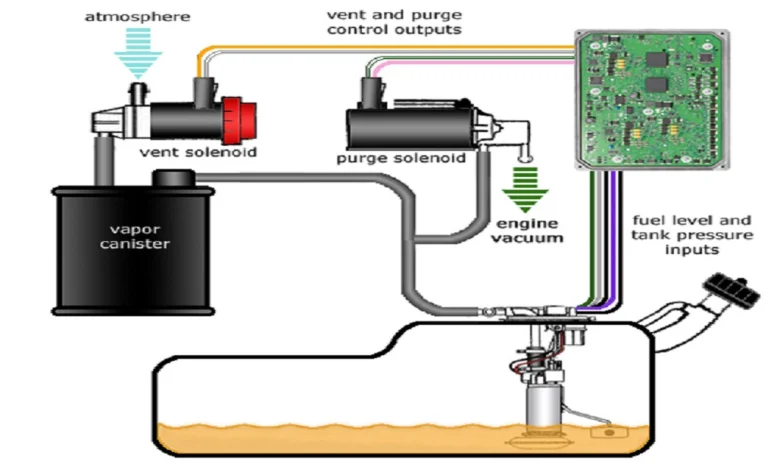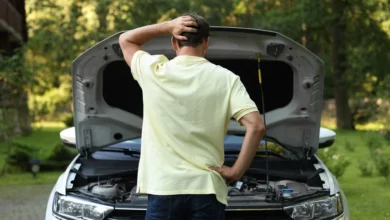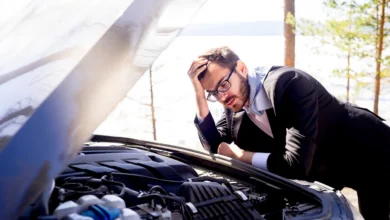
You’re driving along when suddenly the check engine light pops up. It could be nothing—or it could be an evaporative emission system leak. But what is that exactly, and how serious could it be?
Ignoring it might seem tempting, but the longer you wait, the worse it can get. The EVAP system is responsible for trapping fuel vapors from escaping into the environment. A leak not only harms your car’s performance but also contributes to pollution and could lead to a failed emissions test. And if the problem escalates, you might be looking at a hefty repair bill.
The good news is, diagnosing and fixing an EVAP leak doesn’t have to be overly complicated or expensive. In this article, we’ll break down everything you need to know: from how serious these leaks are, to their symptoms, costs, and whether it’s safe to keep driving. Let’s dive into the world of EVAP leaks and keep your vehicle in top shape!
How Serious is an Evaporative Emission System Leak?
An evaporative emission system leak can range from minor to significant, depending on the size of the leak. However, even the smallest leak is worth paying attention to.
Small Leaks
- Small leaks, like a loose gas cap or minor hose damage, may seem harmless. Yet, these can cause your car to fail an emissions test.
- While a small leak may not immediately affect your car’s drivability, over time, it can lead to bigger problems if not fixed.
Large Leaks
- Large leaks are a different story. These can trigger the check engine light and cause fuel vapors to escape at a faster rate. Not only does this harm the environment, but it can also decrease fuel efficiency.
- If left unchecked, larger leaks can eventually lead to engine performance issues, such as rough idling, stalling, or poor acceleration.
Whether big or small, an EVAP leak shouldn’t be ignored. It’s important for both environmental reasons and vehicle longevity.
How Do You Fix an Evaporative Emission System Leak?
Fixing an EVAP leak can be straightforward if the issue is minor but can involve more complex diagnostics and repairs for larger problems.
Step 1: Check the Gas Cap
The most common culprit for an EVAP leak is a loose or damaged gas cap. Simply tightening or replacing the cap can resolve the issue in many cases.
Step 2: Smoke Test
If the gas cap isn’t the problem, mechanics often perform a smoke test to locate the leak. A smoke machine pumps smoke into the EVAP system to identify any cracks or holes where vapors might be escaping.
Step 3: Repair or Replace Damaged Components
Once the leak is located, the faulty part—whether a hose, valve, or canister—can be replaced. Most repairs involve replacing damaged seals, hoses, or even the charcoal canister that stores fuel vapors.
Step 4: Reset the System
After repairs, the system needs to be reset using an OBD-II scanner. This clears the error codes, ensuring the check engine light goes off and the vehicle runs smoothly.
Is It Okay to Drive with an EVAP Leak?
While your vehicle will still operate with an EVAP leak, it’s not recommended to drive for long periods without addressing the issue.
Safety Concerns: An EVAP leak doesn’t pose an immediate threat to your safety or cause your car to break down. However, ignoring it can lead to larger, more costly problems in the future.
Environmental Impact: EVAP leaks release fuel vapors into the air, contributing to air pollution. This is not only harmful to the environment but may cause your vehicle to fail an emissions test.
Possible Engine Problems: Prolonged driving with a leak could eventually affect engine performance. For example, the vehicle may begin to idle roughly or experience poor fuel efficiency.
In short, while it’s not an emergency, driving with an EVAP leak isn’t ideal and should be addressed sooner rather than later.
How Much Does It Cost to Fix an EVAP Leak?
The cost to repair an EVAP system leak can vary greatly depending on the severity of the leak and which components need to be replaced.
Gas Cap Replacement: If the gas cap is the problem, a simple replacement can cost as little as $15 to $50.
Smoke Test and Diagnostics: A smoke test, which helps locate the source of the leak, typically costs between $100 to $200 at a repair shop.
Component Replacement: If a valve, hose, or charcoal canister is the issue, the repair costs can range from $200 to $600, depending on labor and parts.
Larger Issues: In rare cases, if multiple components need to be replaced, or the issue is difficult to diagnose, the costs could rise upwards of $1,000.
Evaporative Emission System Leak Detected (Very Small Leak)
A “very small leak” is often identified by your car’s onboard diagnostics system with a P0456 error code. This indicates a minor issue in the EVAP system, like a small crack in a hose or a loose gas cap.
Symptoms:
- Check engine light
- Potential decrease in fuel efficiency
- No noticeable drivability issues
EVAP System Leak Repair Cost
For small leaks, the repair cost is relatively low. A simple gas cap replacement might only cost $15, while fixing a minor hose leak can range from $100 to $200. The repair cost increases with the complexity of the issue.
Evaporative Emission System Leak P0456
The P0456 error code points to a very small leak in the EVAP system. It’s often caused by:
- A loose or damaged gas cap
- Minor cracks in hoses
- Small valve malfunctions
This is one of the most common EVAP-related codes and is usually simple to fix.
Evaporative Emission System Leak Detected P0455
The P0455 code signals a large leak in the EVAP system. It’s more serious than P0456 and could be caused by:
- Severely damaged hoses
- A faulty canister
- Major valve malfunctions
This issue requires prompt attention, as it can affect both the environment and your vehicle’s performance.
Conclusion
Evaporative emission system leaks are common but important issues to address in any vehicle. Whether it’s a small leak like a loose gas cap or a more serious issue like a cracked hose, fixing the problem early can save you money and prevent larger repairs down the road. By understanding the symptoms, costs, and repair options, you’ll be better equipped to handle any EVAP leak that comes your way. So, next time that check engine light comes on, don’t panic—just check for an EVAP system leak and get it fixed!
We hope you found this article helpful. If you did, check out our blog for more great content like this.





